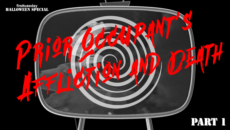Non-smoking addendum – smokers to butt out or get out
Consider a non-smoking family who leases a unit in an apartment complex. The landlord bans tenants from smoking in all indoor units, but permits smoking in common areas such as around the pool and playground areas.
A child in the family suffers from respiratory distress caused asthma and allergies which are aggravated by secondhand smoke when using the facilities in the common areas. The family makes a demand on the landlord to eliminate smoking in the common areas by tenants and guests, which the landlord rejects.
The family claims the secondhand smoke constitutes a private nuisance and the landlord has responsibility to prevent the harmful smoke since a residential landlord’s duty of care requires him to maintain the premises in a reasonably safe condition.
Did the landlord breach is duty of care owed to the family?
Yes! The landlord’s failure to limit smoking to prevent it from adversely affecting users of the common areas, including the child of the family, was a breach of his duty of care since a landlord has a duty to maintain the premises in a reasonably safe condition for the tenants’ intended use. [Birke v. Oakwood Worldwide (2009) 169 CA4th 1540]
Avoiding lawsuits: the rights of the landlord, the non-right of the smoker
Environmental tobacco smoke (ETS) is a combination of over 4,000 gases and particles, many of which have been identified as toxic air pollutants. ETS can be inhaled either directly (first-hand smoke) or indirectly (second-hand smoke). Health effects of ETS include:
- developmental effects, including low-birth rate and pre-term delivery;
- respiratory effects, including asthma and respiratory tract infections;
- lung cancer; and
- heart disease.
Every landlord has a duty to ensure housing he rents remains safe and sanitary. Additionally, a landlord has a duty to protect his tenants from foreseeable dangers. If the ETS poses a governmentally recognized danger to tenants, a wise landlord will take steps to avoid claims. [Stoiber v. Honeychuck (1980) 101 CA3d 903; Calif. Code of Civil Procedure §1174.2]
A landlord may do any of the following to alleviate the burden of future ETS litigation:
- relocate non-smokers so they are not affected by the ETS of smoking tenants;
- relocate smokers so they will not affect non-smokers; or
- refuse to rent to persons who will not agree to the non-smoking provisions contained in or attached to the rental or lease agreement.
Alternatively, the landlord may:
- designate all of the property as smoke-free, with the exception of any clearly defined areas from which smoking will not affect others by amending existing rental agreements or expired lease agreements; [See first tuesday Form 563-1] and
- enforce no smoking as part of the rules and policies of occupancy of the property through a “property policies” provision in the rental or lease agreement, then serve tenants who breach the no-smoking rule with a 3-day notice perform (do not smoke) or quit. [See first tuesday Form 576]
The above policies can be agreed upon by the landlord and tenant when entering into a lease agreement by the use of use of a Non-Smoking Addendum. The Non-Smoking Addendum either prohibits smoking on the entire premises, or notes the specific location on the property where smoking is permitted. [See first tuesday Form 563-1 §3]
The non-smoking policy cannot be imposed tenants under an existing fixed-term lease until renewal of the lease is negotiated, at which point the addendum is to be attached. The use of a property policies provision in a lease agreement is another method for changing the rules on tenants under a fixed-term lease.
However, tenants in possession under month-to-month (periodic) rental agreement or an expired lease agreement can be given a 30-day notice of change in rental terms of the occupancy which would include the non-smoking provision as the change. [See first tuesday Form 570 §7]
The tenant receiving a 30-day Notice of Change in Rental Terms does not need sign a non-smoking addendum. The tenant, by remaining in possession and not giving notice to vacate, has thus agreed to the non-smoking provision. The no-smoking condition is enforceable on the running of 30 days from delivery of the notice.
The argument smokers have the right to smoke is not valid. Smoking is not a protected privacy interest under the United States Constitution. Further, smokers are not a protected group of people covered by equal protection clauses in the United States or California constitutions. [For more information on the anti-smoking policies in apartment units, see the April 2008 first tuesday article, Tobacco Smoke: A New Nuisance for Landlords; see also “There is No Constitutional Right to Smoke,” prepared by the Technical Assistance Legal Center (TALC), available at http://www.talc.phi.org]
In California, smoking is increasingly considered antisocial behavior, unacceptable and proven dangerous. A landlord could very well see his tenants – and income – go up in smoke if he does not take steps to mitigate the exposure of his tenants to tobacco smoke.
Editor’s note: Current first tuesday students and purchasers of first tuesday Forms-on-CD 4.3 may download a FREE copy of the Non-Smoking Addendum enabled for digital personalization, fill, print and save. Log into your student homepage at www.firsttuesday.us using your eight digit Department of Real Estate (DRE) license number or Temporary license number and click, “first tuesday Forms Downloads and Updates.”



















